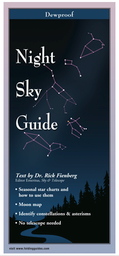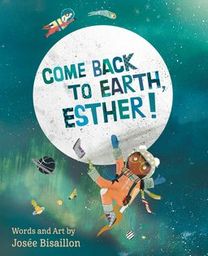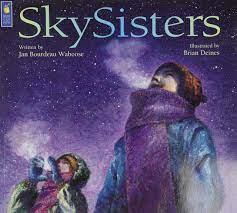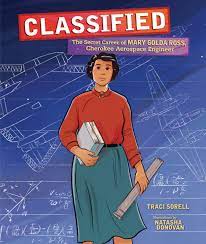What Is World Space Week?
In 1999, the United Nations General Assembly designated October 4 to 10 a time of international celebration and recognition of science and technology. These dates commemorate the following events:
• October 4, 1957: The launch of Sputnik 1 (the first man-made satellite)
• October 10, 1967: The signing of “The Treaty on Principles Governing the Activities in the Exploration and Peaceful Uses of Outer Space, including the Moon and Other Celestial Bodies”
Where Is World Space Week Celebrated?
The United Nations, with the help of the World Space Week Association (WSWA), heads a worldwide team of national coordinators. The coordinators are responsible for promoting the celebration of World Space Week within their own countries. Many volunteers support these initiatives at the local level.
How Is World Space Week Celebrated?
World Space Week features events hosted by schools, museums, planetariums, astronomy clubs, space agencies, etc. In 2019, over 8,000 events were held in 96 countries to celebrate the theme “The Moon: Gateway to the Stars.” The theme for 2021 is “Women in Space.”
Educational Resources
World Space Week provides educators with a great opportunity to involve students in space projects and activities and to spark their interest in further science and technology learning. There are many resources available to teachers for use in the classroom. The following are just a few.
The World Space Week website has a long list of resources including downloadable teacher’s guides, activity guides, etc.: worldspaceweek.org
 Night Sky Guide
Night Sky Guide
written by Dr. Rick Fienberg
Earth Sky + Water, LLCI
ISBN 978-1-93538018-4
This handy fold-out guide to the night sky is heavily laminated to make it “dew proof.” Perfect for student or beginner star gazing, this guide is arranged seasonally and features major constellations and other objects that can be identified with the naked eye. Instructions on how to use the guide are included. Available at: earthskywater.net
Did You Know?
The Canadian Space Agency was created in 1990 by an act of parliament. The headquarters are located in Longueuil, Quebec. The agency employs 686 people and has an annual budget of $421.1 million.
 Come Back to Earth, Esther!
Come Back to Earth, Esther!
written and illustrated by Josee Bisaillon
Nimbus Publishing
ISBN 978-1-77108-784-1
In her first book as both the author and illustrator, Josee Bisaillon introduces a space-obsessed little girl named Esther. Esther’s biggest wish is to “travel on a spaceship, visit the Milky Way, discover constellations, and, of course,
walk on the moon.” A wonderful read-aloud for primary classrooms, this book provides many opportunities to involve students in lively conversations and science-based activities and projects.
 Big Bear
Big Bear
by Michelle Corneau
Strong Nations Publishing
ISBN 978-1-77441-149
Big Bear is one of the stories told by the Kanyen’keha:ka people (one of the six nations that comprise the Haudenosaunee). The story about this group of stars changes as the seasons progress.
Note: This book is also available in French.
 Sky Sisters
Sky Sisters
by Jan Waboose
illustrated by Brian Deines
Kids Can Press
ISBN 1-55074-697-9
I have used this book as a read-aloud in primary classrooms many times! It tells the story of two sisters walking out into a still, northern night. As they climb the hill behind their house, they are met by a rabbit, a deer, and a coyote. At the top of the hill they stop to make snow angels in the deep snow. As they lie there looking up at the sky, they are welcomed by the arrival of the Sky Spirits—the Northern Lights.
 The Hubble Space Telescope
The Hubble Space Telescope
by Terence Dickinson with Tracy C. Read
Firefly Books
ISBN 978-0-2281-0217-5
Suitable for ages ten and up, this book is packed full of information about the Hubble Space Telescope, our solar system, the Milky Way Galaxy, galaxies beyond the Milky Way, and a brief glimpse of deep space. Every page is illustrated with stunning photos taken from the Hubble Telescope. Readers are supported by charts, diagrams, detailed captions, labels, fact boxes, and a glossary. This book is well-written, tightly organized, and well designed.
 Classified
Classified
The Secret Career of Mary Golda Ross, Cherokee Aerospace Engineer
Lerner Publishing Group
ISBN 978-1-5415-7914-9
In 1941, Mary Golda Ross left her teaching career and became a mathematician for the Lockheed Aircraft Corporation. With the company’s help, she completed her engineering degree, and, in time, she became Lockheed’s first Native American female engineer. Mary drew on her traditional Cherokee values throughout her career:
• gaining skills in all areas of life
• working cooperatively with others
• remaining humble when others recognize your talents
• helping ensure equal education and opportunity for all
Mary worked collaboratively with a secret task force on projects such as weather satellites and design concepts for space travel (later used in the Apollo space program). Written for children ages 7 to 11, this picture book supports young readers with a variety of non-fiction text features such as a timeline, illustrations, captions, a map, and bold words.
 50 Things To See With A Telescope A Young Stargazer’s Guide
50 Things To See With A Telescope A Young Stargazer’s Guide
by John A. Read
Formac Publishing Company
ISBN 1-4595-0536-0
The purpose of this book is to introduce young people to stargazing. Clear instructions are given on how to use the book, how to choose the right equipment, and how to get started. Each of the six chapters highlights objects that can be seen in the night sky year-round or seasonally. Some of these objects can even be viewed without a telescope or binoculars. The book is well organized and supports intermediate level readers with non-fiction text features such as a glossary, maps, photographs, labelled diagrams, and fact boxes
Did You Know?
There have been four recruiting campaigns for astronauts in Canada. The following people were selected from the thousands of applicants:
1983 – Roberta Bondar, Marc Garneau, Robert Thirsk, Ken Money, Bjarni Tryggvason, and Steve MacLean.
1992 – Chris Hadfield, Julie Payette, Dafydd Williams, and Michael McKay. 2009 – Jeremy Hansen and David St. Jacques.
2017 – Jushua Kutryk and Jennifer Sidey.
Nine Canadians have participated in seventeen manned missions—fourteen NASA Space Shuttle missions and three Roscosmos Soyuz missions.
Hubble Space Telescope Videos/NASA
The NASA website offers many educational resources including videos of the Hubble Space Telescope: nasa.gov
What is the Canadarm?
This short video gives a brief history of the Canadarm and explains its purpose. youtube.com/watch?v=cRt8cH1iMp4
Chris Hadfield Brushes his Teeth in Space
The Canadian Space Agency website has a great selection of videos to choose from, including this one that is sure to peak student interest! youtube.com/watch?v=3bCoGC532p8
Did You Know?
Marc Garneau was the first Canadian in space. He launched in the Challenger on October 5, 1984. Roberta Bondar was the first Canadian woman in space. She launched in the Discovery
ABOUT THE AUTHOR
Brenda Boreham
Brena has 35 years of classroom experience. She has presented workshops on literacy strategies, and has written a number of resources for teachers. She remains passionate about matching up kids with book.
This article is featured in Canadian Teacher Magazine’s Fall 2021 issue.











